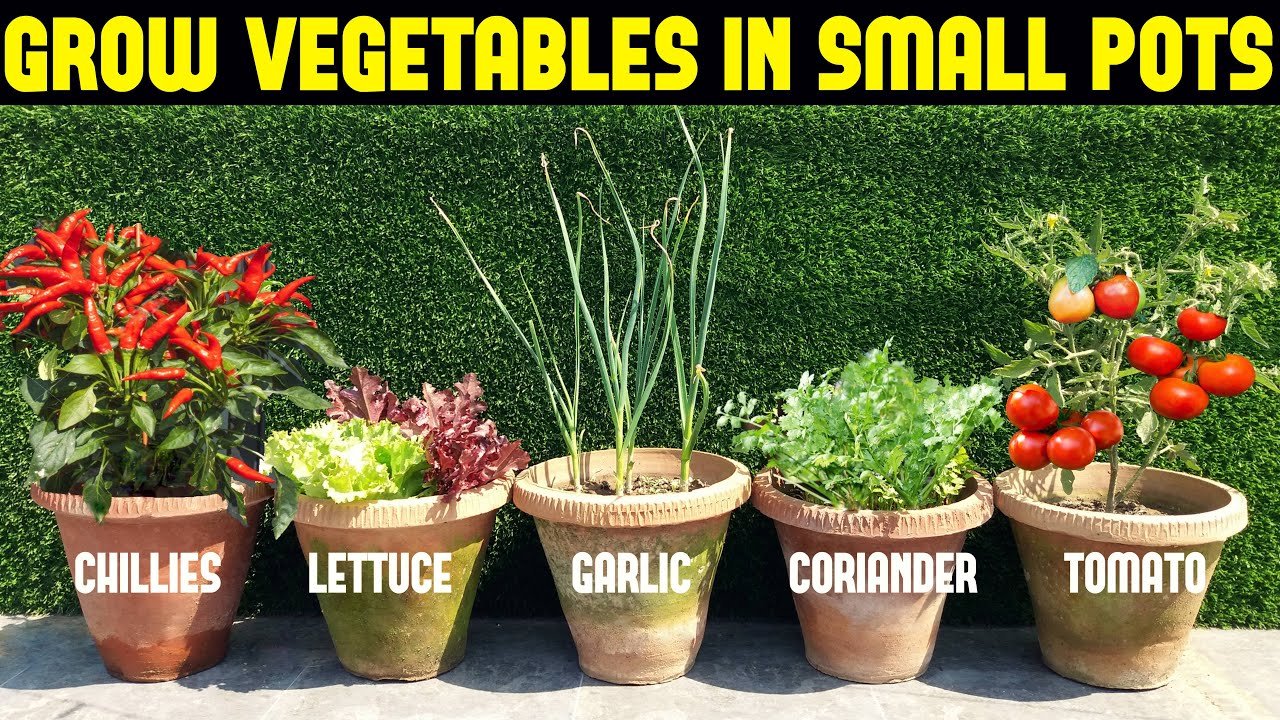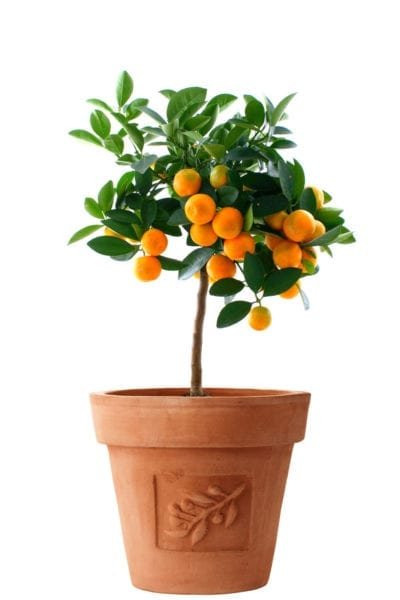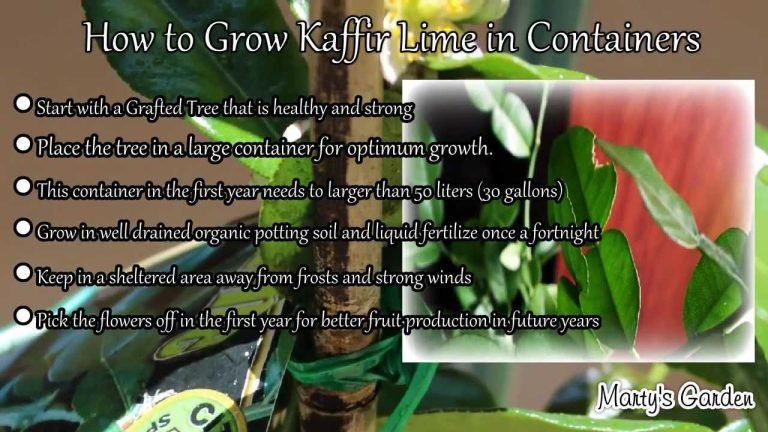how to grow vegetables in a pot – [Beginners Guide]
Hey there! Are you looking for a fun and easy way to grow your own fresh vegetables at home? Look no further than growing them in pots! I personally have been growing vegetables in pots for several years now and it has been such a rewarding experience. Not only do I get to enjoy fresh, organic produce straight from my own backyard, but it’s also a great way to save money on groceries.
One of the best things about growing vegetables in pots is that it’s extremely versatile. Whether you have a small balcony or a large backyard, you can easily find pots to fit your space. Plus, it’s a great option for renters who may not be able to make permanent changes to the property.
Another benefit of growing vegetables in pots is that it can be a great way to control the environment for your plants. You can choose the type of soil, the amount of sunlight, and the amount of water that your plants receive. This can lead to healthier and more productive plants.
Lastly, growing your own vegetables in pots is a great way to connect with nature and to get some exercise. Gardening can be a great stress reliever and can help you to relax and unwind after a long day.
So, whether you’re a seasoned gardener or a beginner, I highly recommend giving vegetable gardening in pots a try. You’ll be amazed at how easy and rewarding it can be!
Pot or container selection
When it comes to growing vegetables in pots, the type of pot you choose is important for the success of your plants. Here are a few things to keep in mind when choosing the right pot for your vegetables.
Size: The size of the pot will depend on the type of vegetable you’re growing. As a general rule, the pot should be at least 12 inches deep and 12 inches wide for most vegetables. For larger vegetables like tomatoes, a pot that is 18 inches deep and 18 inches wide is ideal.
Capacity: It’s important to choose a pot that has enough capacity to hold enough soil for your plant to grow. A good rule of thumb is to choose a pot that has at least 1 gallon of soil capacity for every inch of the pot’s diameter. For example, a 12-inch pot should have at least 12 gallons of soil capacity.
Construction: When it comes to the construction of the pot, it’s important to choose a pot that is made from a durable material that can withstand the elements. Pots made from plastic, ceramic, or terra cotta are great options. Avoid pots made from metal or wood, as they can get too hot or retain too much moisture, which can harm your plants.
Drainage: Good drainage is crucial for the healthy growth of vegetables in pots. Make sure the pot has drainage holes at the bottom to allow excess water to escape.
In summary, when choosing a pot for growing vegetables, keep in mind the size and capacity of the pot, as well as its construction and drainage properties. Choose a pot that is at least 12 inches deep and 12 inches wide and has at least 1 gallon of soil capacity for every inch of the pot’s diameter, made from a durable material such as plastic, ceramic, or terra cotta and has drainage holes at the bottom to allow excess water to escape.
Make suitable soil mix
When it comes to growing vegetables in pots, the type of soil you use is just as important as the type of pot. Here are a few things to keep in mind when choosing the right soil mix for your vegetables.
Type: The ideal soil mix for vegetables in pots should be well-draining, yet moisture-retentive. A good potting mix will typically contain a combination of peat moss, vermiculite, and perlite. These ingredients help to provide the perfect balance of moisture retention and drainage.
Mixture: You can either buy pre-mixed potting soil or make your own mixture by mixing together equal parts of peat moss, vermiculite, and perlite. You can also add a slow-release fertilizer to the mix, which will provide your plants with the nutrients they need throughout the growing season.
Composition: The correct soil composition is essential for optimal growth of vegetables. A soil with a pH between 6.0 and 7.0 is ideal for most vegetables. You can test the pH of your soil by using a pH test kit, which can be found at most garden centers.
Organic Matter: Incorporating organic matter such as compost, well-rotted manure, or worm castings into the soil mix can be beneficial. Organic matter helps to improve the soil structure, increase water-holding capacity and add essential nutrients.
In summary, when choosing soil mix for growing vegetables, keep in mind the type of soil mix which should be well-draining, yet moisture-retentive with a mixture of peat moss, vermiculite, and perlite. The correct soil composition is essential for optimal growth with pH between 6.0 and 7.0 and incorporating organic matter such as compost, well-rotted manure, or worm castings can improve the soil structure, increase water-holding capacity and add essential nutrients.
How to plant the vegetables?
Growing vegetables in pots at home is a fun and easy way to enjoy fresh, organic produce straight from your own backyard. Here’s a step-by-step guide to help you get started.
- Choose your vegetables: Decide which vegetables you want to grow. Consider factors such as the size of your pot and the amount of sunlight your location gets. Some good options for beginners include tomatoes, peppers, lettuce, and herbs.
- Choose the right pot: Select a pot that is at least 12 inches deep and 12 inches wide for most vegetables, and 18 inches deep and 18 inches wide for larger vegetables like tomatoes. Make sure the pot has drainage holes at the bottom.
- Prepare your soil mix: Fill your pot with a well-draining, moisture-retentive soil mix that contains a combination of peat moss, vermiculite, and perlite. You can also add a slow-release fertilizer to the mix.
- Plant your seedlings: Carefully remove your seedlings from their container and place them in the pot, making sure to leave enough space between them for growth. Fill in around the seedlings with soil, and press down lightly to firm the soil around the roots.
- Water your plants: Water your plants well, making sure to moisten the soil evenly. Keep an eye on the soil moisture level and water as needed to keep the soil consistently moist, but not waterlogged.
- Give your plants proper light: Place your pot in an area that receives at least 6 hours of direct sunlight per day. If you don’t have an area with enough natural light, you can use grow lights to supplement the light your plants receive.
- Fertilize and monitor: Use a slow-release fertilizer or a liquid fertilizer to feed your plants during the growing season. Keep an eye out for pests and diseases, and take appropriate action if necessary.
By following these simple steps, you’ll be well on your way to growing a bountiful crop of delicious vegetables in no time! Remember to be patient and enjoy the process, gardening is a great way to connect with nature and to get some exercise.
How to care for vegetables?
Caring for Vegetables in a Pot at Home
Watering Requirement
Vegetables grown in pots have different watering needs than those grown in a garden. The soil in pots dries out faster, so it is important to check the soil moisture level frequently. A good way to check if a plant needs watering is to stick your finger about an inch into the soil. If it feels dry, it’s time to water. Water the vegetables until the excess water runs out of the bottom of the pot. Be careful not to over-water, as this can lead to root rot. It is important to water vegetables during their active growth period and reduce watering during their dormant period.
Fertilizer Requirement
Vegetables grown in pots require regular fertilization to ensure optimal growth. A balanced, water-soluble fertilizer is best for vegetables in pots. Follow the package instructions for application rates and frequency. Vegetables also benefit from adding a slow-release fertilizer at planting time, and supplementing with a liquid fertilizer every 2-4 weeks during the growing season.
Sunlight Needs
Vegetables need at least 6 hours of direct sunlight per day to thrive. Choose a location that gets full sun in the morning and late afternoon, but some shade during the hottest part of the day. If the location is not ideal, you can use shade cloth to provide the necessary protection. Vegetables that need less sunlight include lettuce, spinach, and chard.
Pruning & Training
Pruning and training are important for vegetables grown in pots. Remove any dead or damaged leaves or branches to promote healthy growth. If a plant becomes too tall or leggy, you can pinch back the tips to encourage bushier growth. For tomatoes and cucumbers, you can train the plants to a single stem, and use a cage or trellis to support the plant as it grows.
Other Care
- Check regularly for pests and diseases and take appropriate action if necessary.
- Keep an eye on soil moisture, and adjust watering as needed.
- Regularly remove weeds from the pot to prevent competition for water and nutrients.
By following these care guidelines, your vegetables will have the best chance to grow healthy and strong in a pot at home.
Common problems
Common Problems for Vegetables Grown in a Pot at Home
Pests and Insects
Pests and insects can be a common problem for vegetables grown in pots. Some common pests include aphids, whiteflies, and spider mites. These pests can damage leaves and stunt growth. Regularly inspecting plants and using an appropriate insecticide can help control pest populations. Additionally, using natural pest control methods such as introducing beneficial insects or using neem oil can also be effective.
Diseases
Diseases can also be a problem for vegetables grown in pots. Some common diseases include powdery mildew, blight, and wilt. These diseases can cause leaf discoloration and wilting, and in severe cases, can kill the plant. Preventing disease starts with providing the plants with optimal growing conditions, including proper watering and fertilization. Additionally, removing infected plants and practicing crop rotation can also help prevent the spread of disease.
Poor Production
Poor production can be caused by a variety of factors including over or under watering, poor soil quality, and lack of fertilization. To ensure optimal production, it is important to monitor soil moisture, use a high-quality potting mix, and provide regular fertilization. Additionally, providing plants with proper sunlight and using good pruning and training techniques can also help increase production.
Other Issues
- Overcrowding of plants in the pot can lead to competition for water and nutrients, resulting in smaller or fewer vegetables.
- Using a pot that is too small for the plant can cause the roots to become root-bound, resulting in poor growth and production.
- Excessive heat can cause stress on the plants and reduce production.
By being aware of these common problems and taking steps to address them, you can help ensure that your vegetables grown in pots at home are healthy and productive.
Harvesting & storing homegrown vegetables
Harvesting and Storing Homegrown Vegetables
When to Harvest
Knowing when to harvest your homegrown vegetables is important for getting the best flavor and quality. Most vegetables should be harvested when they are fully mature and at the peak of their flavor, but before they start to overripe or deteriorate. The specific time for harvest will vary depending on the vegetable, but here are a few examples:
- Tomatoes: Harvest when the fruit is fully colored and slightly soft to the touch.
- Peppers: Harvest when the fruit is fully colored and slightly firm to the touch.
- Cucumbers: Harvest when the fruit is dark green and firm to the touch.
- Beans: Harvest when the pods are firm and slightly curved.
How to Harvest
Harvesting homegrown vegetables is easy, but it is important to use the proper technique to avoid damage to the plant or the vegetables themselves. Use clean, sharp shears or scissors to cut vegetables from the plant. Be careful not to damage the stem or branches as you harvest. For vegetables such as tomatoes and peppers, gently twist the fruit to break it from the stem. For vegetables such as beans and cucumbers, gently pull the fruit from the stem.
Storing
Proper storage can help ensure that your homegrown vegetables stay fresh and flavorful for longer. Most vegetables should be stored in a cool, dry place. Here are a few tips for storing specific vegetables:
- Tomatoes: Store at room temperature, out of direct sunlight.
- Peppers: Store in a plastic bag in the refrigerator.
- Cucumbers: Store in a plastic bag in the refrigerator.
- Beans: Store in a plastic bag in the refrigerator.
By following these guidelines for when, how, and where to harvest and store your homegrown vegetables, you can ensure that you can enjoy their fresh taste and quality for as long as possible.
Growing vegetables in container – Conclusion
Conclusion
Growing vegetables in a pot can be a great way to enjoy fresh, homegrown produce even if you don’t have a traditional garden. By providing your vegetables with the right care, including proper watering, fertilization, sunlight, pruning and training, and monitoring for pests and diseases, you can ensure that your vegetables grow healthy and strong.
It is also important to know when, how and where to harvest and store your vegetables to ensure they stay fresh and flavorful for as long as possible. It is also a good idea to keep an eye on common problems that can occur with vegetables grown in pots, such as pests and insects, diseases, poor production and other issues, and take steps to address them.
With the right knowledge and care, growing vegetables in a pot can be a fun and rewarding experience. We encourage you to try implementing the information discussed in this article at home and enjoy the taste and satisfaction of homegrown vegetables.
Tips for Success
- Choose the right pot and soil for your vegetable.
- Provide proper watering, fertilization, sunlight and pruning.
- Regularly check for pests and diseases.
- Harvest and store vegetables properly.
With the right care and attention, your homegrown vegetables will thrive and provide you with a bountiful harvest season after season.







